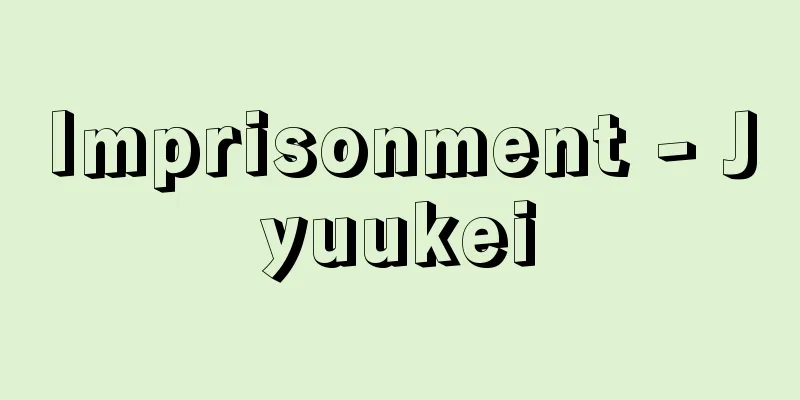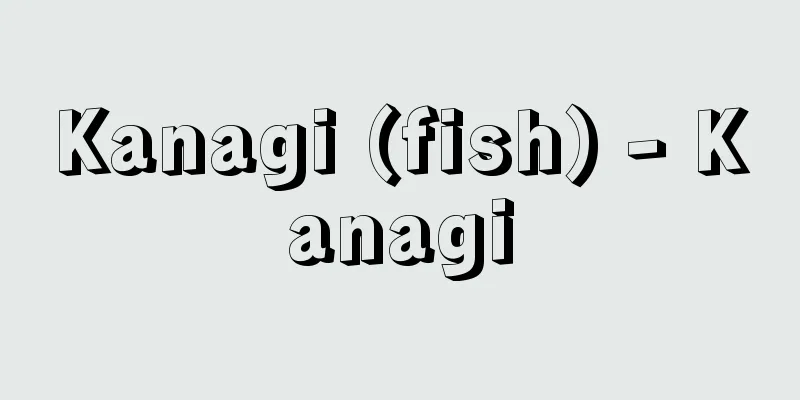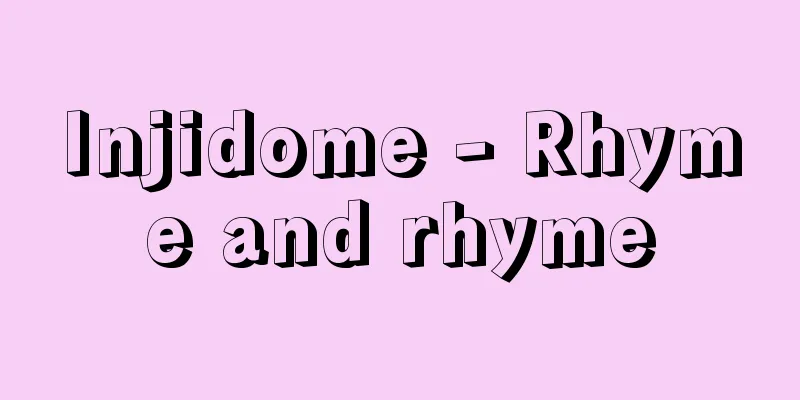Imprisonment - Jyuukei

|
A punishment that involves the deprivation of freedom. Under current law, there are three types: imprisonment, incarceration, and detention. They are distinguished from the death penalty, which takes a life, corporal punishment, which injures the body, honor punishment, which takes away honor, and monetary punishment, which takes away money. Until around ancient times and the Middle Ages, except for imprisonment (imprisonment) for the upper classes, the content was the exploitation of labor to make up for labor shortages, but in the late 16th century, when capitalism finally emerged with the Industrial Revolution, imprisonment with the aim of improving criminals through labor appeared (Amsterdam Penitentiary), which was the forerunner of modern imprisonment. In Japan, a type of labor punishment called hard labor existed from the time of the Ritsuryo system until the Meiji era, but in 1790, Ishikawajima Labor Camp, established by Matsudaira Sadanobu, attempted to improve criminals through labor and Shingaku lectures. However, the improvement through labor was limited to certain times and regions, and did not develop smoothly. The content of imprisonment varies depending on which freedoms are deprived, but the current imprisonment has two important elements: compulsory isolation from free social life (incarceration) and improvement and rehabilitation (treatment) aimed at social reintegration during that period. Regarding the issue of incarceration, the legal status of prisoners is discussed in relation to the scope of restrictions on freedom that accompanies incarceration. The development of the prison reform movement from a humanitarian perspective and the trend toward emphasizing human rights since the beginning of the 20th century have encouraged the reduction of the scope of restrictions on prisoners' freedom. It is also advocated that rights other than freedom should not be violated (purification of imprisonment). The idea of treatment owes much to the development of human behavioral science, which began in earnest in the late 19th century, and aims to defend society by improving criminals, along with the defense of society through isolation (detoxification). Currently, the issue of imprisonment is moving mainly around the issue of treatment, and it is no exaggeration to say that detention is becoming one of the conditions for treatment, and fixed-term imprisonment is also considered to be part of treatment. In a treatment-centered approach, the distinction between imprisonment and incarceration becomes meaningless (single-sentence theory), and short-term imprisonment, which does not provide sufficient treatment, is considered to have more harmful effects than ameliorative effects. In addition, the idea that treatment in an environment as close as possible to the general society is necessary for training for a free social life has led to the emergence of open facilities in place of traditional closed facilities, the unnecessaryness of continuous detention has been preached, and various systems such as weekend detention and leave systems have been adopted. However, some criminals need to be made to recognize that they have committed illegal acts and to be separated from poor social environments for a certain period of time, rather than special treatment for improvement and rehabilitation, and detention is considered to be an issue that cannot be ignored. [Shuichi Susuki] [Reference] | |Source: Shogakukan Encyclopedia Nipponica About Encyclopedia Nipponica Information | Legend |
|
自由の剥奪(はくだつ)を内容とする刑罰。現行法上、懲役、禁錮、拘留の3種類がある。生命を奪う死刑、身体を傷つける身体刑、名誉を奪う名誉刑、金銭を奪う金銭刑などと区別される。古代・中世ごろまでは、上層階級の者に対する拘禁刑(禁錮刑)を除けば、労働力不足を補うための労働力搾取が内容であったが、16世紀後半、産業革命によってようやく資本主義が台頭してくると、労働による犯罪者の改善を目的とする自由刑が登場し(アムステルダム懲治場)、近代的自由刑の先駆けをなした。日本でも、律令(りつりょう)制度以来明治まで徒刑という一種の労働刑があったが、1790年、松平定信(さだのぶ)によってつくられた石川島人足寄場(よせば)では、労働や心学講話などによる犯罪者の改善が試みられた。しかし、労働による改善は時代や地域が限定され、そのまま順調な発展を遂げたわけではなかった。自由刑は、どの自由を剥奪するかによってその内容に違いが出てくるが、現在の自由刑は、自由な社会生活の場からの強制的な隔離(拘禁)とその期間を利用した社会復帰を目ざす改善・更生(処遇)を二つの重要な要素としている。拘禁の問題については、拘禁に伴う自由制約の範囲との関係で、受刑者の法的地位が論ぜられる。人道主義的観点からの監獄改良運動の進展と、20世紀に入ってからの人権重視の風潮は、受刑者の自由の制約範囲の縮限を促した。また、自由以外の権利の侵犯にわたることのないようにも説かれている(自由刑の純化)。処遇の考え方は、19世紀後半に本格化した人間行動科学の発達に負うところが大きく、隔離による社会の防衛(無害化)とあわせ、犯罪者の改善による社会の防衛を意図している。現在、自由刑問題は処遇の問題を中心に動いており、拘禁は処遇のための一条件になりつつあるといっても過言ではなく、懲役における定役も処遇の一環と考えられている。処遇中心の考え方では、懲役と禁錮の区別は無意味なものとなり(単一刑論)、十分な処遇を施すことのできない短期自由刑は改善効果よりも弊害が大きいとされる。また、自由な社会生活への訓練にはできるだけ一般社会に近い環境での処遇が必要であるという理念が、伝統的な閉鎖施設にかわる開放施設を登場させ、継続的拘禁の不必要を説いて、週末拘禁、帰休制などの諸制度を採用させた。しかし、犯罪者のなかには、改善・更生のための特別な処遇より、むしろ違法行為を行ったことを感銘的に認識させること、また、劣悪な社会環境から一定期間切り離すことを必要とする者もおり、拘禁も軽視できない問題だとされる。 [須々木主一] [参照項目] | | | |出典 小学館 日本大百科全書(ニッポニカ)日本大百科全書(ニッポニカ)について 情報 | 凡例 |
>>: Military priest - Jyugunso
Recommend
Togasawara (English spelling) Japanese douglas fir
An evergreen tall tree of the pine family native t...
Palais du Louvre
This is an old French royal palace located on the...
Shrike (Shrike) - Shrike (English spelling)
A general term for birds in the passerine family L...
Drosophila melanogaster - Drosophila
A general term for flies belonging to the family D...
Wooden fish
A Buddhist implement used to set the rhythm of su...
inhibition of ideas
...The thought process is the process of analyzin...
Oyu Geyser - Oyu Geyser
… [Hot springs and earthquakes] Although there is...
Agreement parties -
In other words, a labor agreement is concluded be...
Hejiang - English spelling: Hé jiāng
A county in the southeastern part of Sichuan Provi...
The three-tiered system of prefectures and feudal domains
The local governance system in the early Meiji pe...
Igloo - iglu (English spelling) Eskimo
It is an Eskimo word meaning house, but is well k...
Kiyotaki
[1] [Noun] A waterfall with clear water. ※Engi 5th...
statute mile
…8 furlongs, or 1,760 yards, is about 1.609 km. I...
Leo [IX] - Leo
Pope of the Roman Empire (reigned 1049-1054). He a...
Eliburs [mountain] - Eliburs
The highest peak in the Caucasus Mountains. An ext...









